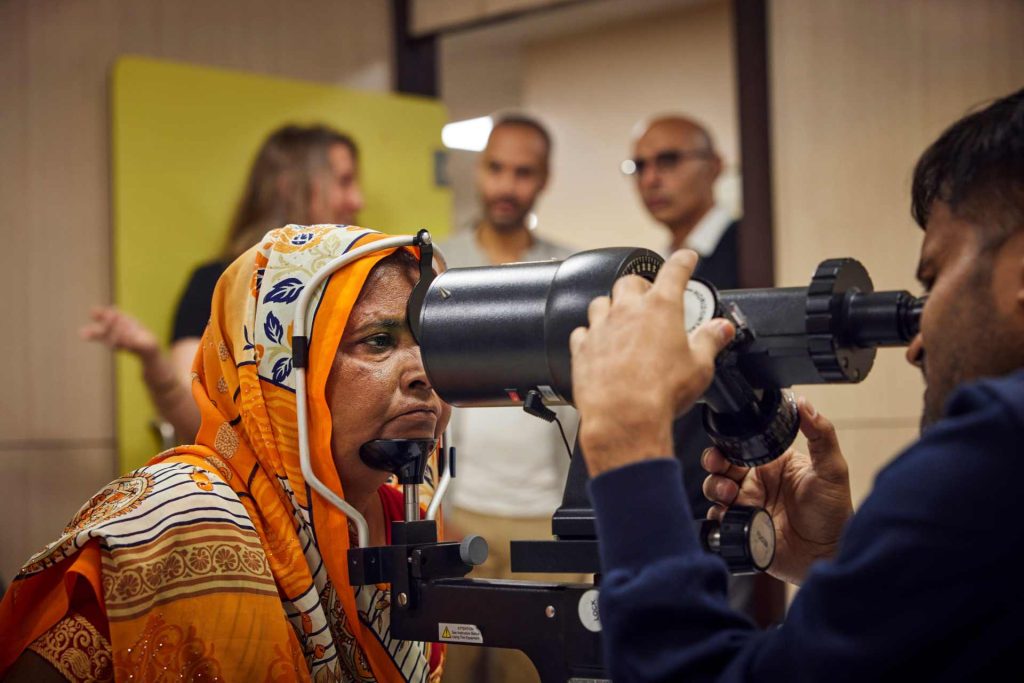
What once seemed like science fiction is now changing lives. Not long ago, paralysis was considered permanent. But today, thanks to groundbreaking bioengineering, people are walking again, their movements powered by thought alone. Blindness is being reversed with cutting-edge treatments. Scientists and innovators worldwide are demonstrating that boundaries may be pushed, discovering ways to improve and enrich life rather than merely prolong it. From pulling water out of thin air to transforming plastic waste into valuable materials and bringing healthcare to the hardest-to-reach places, progress is happening because people refuse to accept “impossible.”
Standing alongside them is Rolex, supporting the pioneers whose ideas are shaping the future. Take 2019 Rolex Awards Laureate Grégoire Courtine, for example. He’s spent years in his .NeuroRestore Laboratory in Switzerland developing technology that bridges the gap between thought and movement. His latest breakthrough, the “digital bridge”, is nothing short of extraordinary—an implant that allows paralysed individuals to move their legs simply by thinking about it. One of his patients, Michel Roccati, a man who was paralysed in a motorcycle accident in 2017, has regained the ability to walk after doctors implanted spinal electrodes that reactivated his muscles.
Meanwhile, on the other side of the world, Kenyan social entrepreneur Beth Koigi is tackling a very different challenge: water scarcity. In dry regions, access to clean drinking water is a daily struggle. That’s where Majik Water comes in—by using atmospheric water generators, Koigi and her team are quite literally pulling water from the air—between 20 and 500 litres a day, depending on conditions. This invention saves the lives of communities suffering from an unrelenting drought.


Then there’s entrepreneur and Rolex Awards Laureate Miranda Wang, who saw a problem most of us ignore: plastic waste. With landfills overflowing and only 9% of the world’s plastic being recycled, she knew something had to change. After years of trial and error, she and her team at Novoloop found a way to break down even the dirtiest plastics into useful chemicals. Now, thanks to Rolex’s support, they’ve built a pilot plant in India that’s already running at full capacity—one step closer to transforming waste into something valuable on a global scale.
It’s not just new technology that’s making an impact.

Sometimes, the biggest changes come from a fresh perspective. In Pakistan, 2019 Laureate Sara Saeed is revolutionising healthcare for those in remote areas. Her organisation, Sehat Kahani, connects female doctors to patients via video calls, bringing medical care to places where hospitals and clinics are scarce. A simple idea, yet one that significantly reshapes lives. In Australia, Laureate Mark Kendall is redefining diagnostics. His nanopatch technology, originally developed for vaccine delivery, has evolved into non-invasive sensors that provide real-time health data. These tiny patches could revolutionise early diagnosis and personalised treatment,
ensuring that medical care is more precise than ever.

In India, 2010 Rolex Awards Laureate Piyush Tewari is making roads safer. Spurred by personal tragedy, he founded the SaveLIFE Foundation, turning one of the world’s most dangerous highways—the Mumbai-Pune Expressway—into a model of road safety. After addressing over 3,500 hazardous issues, fatal accidents on this stretch dropped by 52%. His mission? To create Zero-Fatality Corridors across the country, ensuring that fewer lives are lost to preventable crashes.


One of the most profound transformations comes from Andrew Bastawrous, an ophthalmologist who left his job
in the UK to tackle preventable blindness in Kenya. Peek Acuity, his mobile app, allows healthcare workers to conduct eye exams using just a smartphone. What started as a small initiative has now screened over 10 million people across 12 countries. His objective is that by 2028, Peek will be implemented throughout Nepal, making sure that nobody is left in the dark. Each of these innovators is proof of what’s possible when science, technology, and human determination come together. The Rolex Perpetual Planet Initiative continues to support those who refuse to accept the status quo because, in a world filled with challenges, it’s the pioneers who lead the way to a better future.
This story first appeared on GRAZIA Malaysia April 2025 issue.
READ MORE
Rolex Perpetual Planet Initiative Continues To Safeguard the Poles, Mountains and Forests
